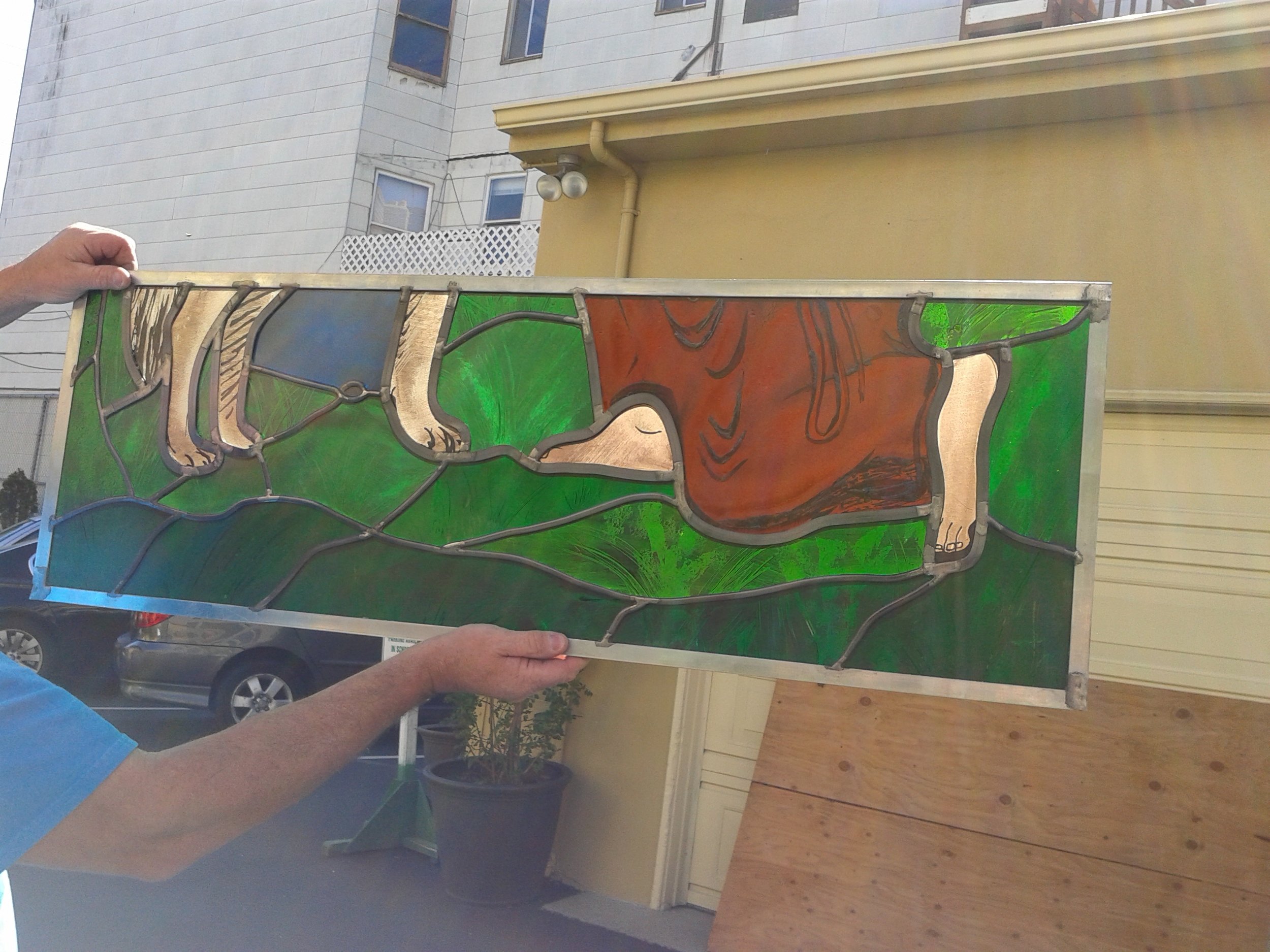St. Francis stained Glass Window, St. Philip the Apostle Chapel, San Francisco
"St. Francis and the Wolf of Gubbio"
February 2015, 50”w x 120”H
Designed by Stefan Salinas
Made by Hogan Studios.
Concept: Rev. Tony LaTorre
In conceptualizing the style in which this window would be rendered, I began with paying attention to the way in which the existing windows in the room were realized.
Since they are quite different in style, the one of Our Lady was the more influential source to draw from, since it is adjacent to Francis.Note the simplified forms in the Madonna’s face and garments. The setting is almost abstract in its sparseness, with bands of clouds that almost look child-drawn. The Star above also has a folk-art expressiveness to it.
The Window of Christ also has a sort of childlike, folk art way about it, and also sports a minimal backdrop.
Both existing windows are done in a “Naïve” style – A simplified representational approach. The Madonna brought to my mind “Primitivisms”: The Nabis and Symbolist painters of the Late 19th Century, and Post-Impressionists like Paul Gauguin and Maurice Denis.
I looked at sources such as Giotto, Fra Angelico and other medieval painters.
The rendering of Umbria is based on actual buildings. A wall surrounded the town at the time of the story. The buildings are almost all white, with a red door, to quote the stark red and white shield above (which is taken from the S.F. Archdiocese’ coat of arms).
Red poppies are sparsely peppered about, as they are present in Umbria, and are a common symbol for those who have died in war. This red is also quoted in the shield (as Christ’s suffering) and in the closed door (that which bars the “others” out). Francis is here to make peace between enemies.











